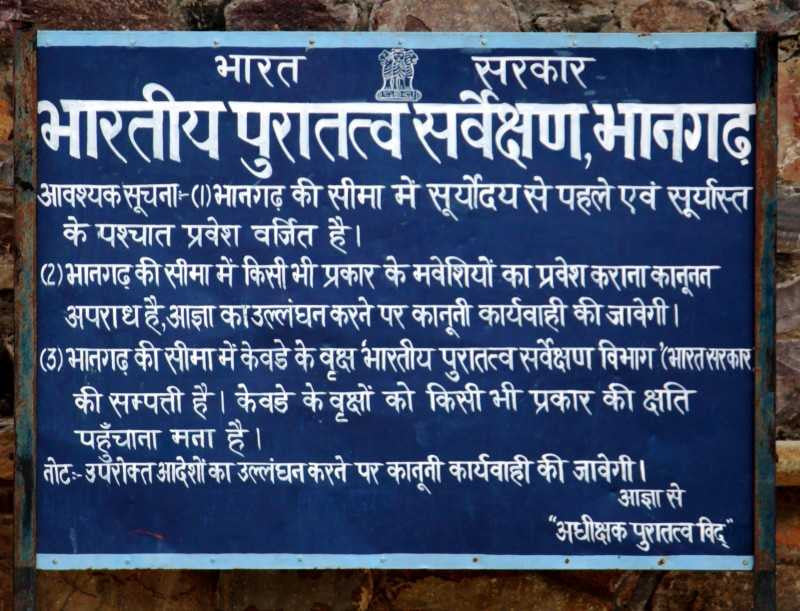Everyone loves a mystery or a haunted story. Especially if it has a plethora of legends ranging from ghosts to black magic up its sleeve. Bhangarh fort provides all these in abundance too. A Place that has so many spooky stones around it that it arouse one’s interest immediately. Bhangarh, once glorious now feared. A place whose only inhabitants now are only an army of monkey and langoors. Located at the border of the Sariska Tiger reserve in the Alwar district of Rajasthan, Bhangarh fort is a 17th century fort, infamous all over the world for being the ‘Most haunted place in India’. Even the Archeological survey of India (ASI) has forbidden the locals and tourists from entering the fort between sunset and sunrise, and locals have moved their town outside the limits of forts.

The town of Bhangarh was established in 1573 by King Bhagwant Das who had two sons. Elder one was Man Singh, the famous General of Mughal Emperor Akbar and the second one was Madho Singh. Bhagwant Das laid the foundation of Bhangarh as the residence of his second son, Madho Singh who lived and ruled here his entire life. Madho Singh named the city after his grandfather Bhan Singh and that’s where ‘Bhangarh’ comes from.
The fort, which is actually a small city composed of temples, palaces and multiple gates, covers a large area of land at the foot of mountain. But despite its beauty and the picturesque scenery, the fort is steeped in dark tales and became completely abandoned by 1783.
The historic ruins is said to have sent many a pulse racing because of the stories that are told, but the architecture merits equal attention. Bhangarh is a grand monument, indeed. One cannot help but feel sad that its praiseworthy architecture now lies buried in its legends.
Now what really happened here, no one knows for certain? There is very little information about this place in history books and almost next to no information about the kings who ruled here.
It is said that the decline Bhangarh fort started in 1630 after Chhatr Singh, son of Madho Singh got killed in a violent attack. The decline continued until 1783 when the fortress and the city were completely abandoned following the year’s famine.
According to a myth, Bhangarh was cursed by the Guru Balu Nath, causing the towns evacuations. Balu Nath sanctioned the establishment of the town but said: “The moment the shadows of your palaces touch me, the city shall be no more!” Ignorant of such foreboding, one ambitious descendant raised the palace to such a height that it shadowed Balu Nath’s forbidden retreat and thus the town was devastated as prophesied. The small smadhi where Balu Nath is said to lie buried is still there.

The other myth is as follows: The charm of princess of Bhangarh Ratnavati was said to be matchless in all of Rajasthan. Being eighteen years old, the princess started getting matrimonial offers from other states. In the same region there lived a tantric, a magician well versed in the occult, named Singhia who desperately in love with the princess knew that he would never be allowed to even see her, let alone meet her. One day, he saw the princess’ maid in the market buying scented oil for her. Seeing this, he got an idea by which he could meet the princess. He used his black magic and put a spell on the oil which would hypnotize the princess by her merely touching the oil, and she would surrender herself. The princess foiled this plan though. She had seen the tantric enchanting the oil and she therefore threw it away, whereupon the flagon rolled over a stone. As soon as the oil touched the stone, it started rolling towards the wicked tantric and crushed him. While dying, Singhia cursed the palace with the death of all who dwelt in it without any rebirth in their destinies. The very next year there was as battle between Bhangarh and Ajabgarh and Ratnavati died.













Leave a comment
This site is protected by hCaptcha and the hCaptcha Privacy Policy and Terms of Service apply.